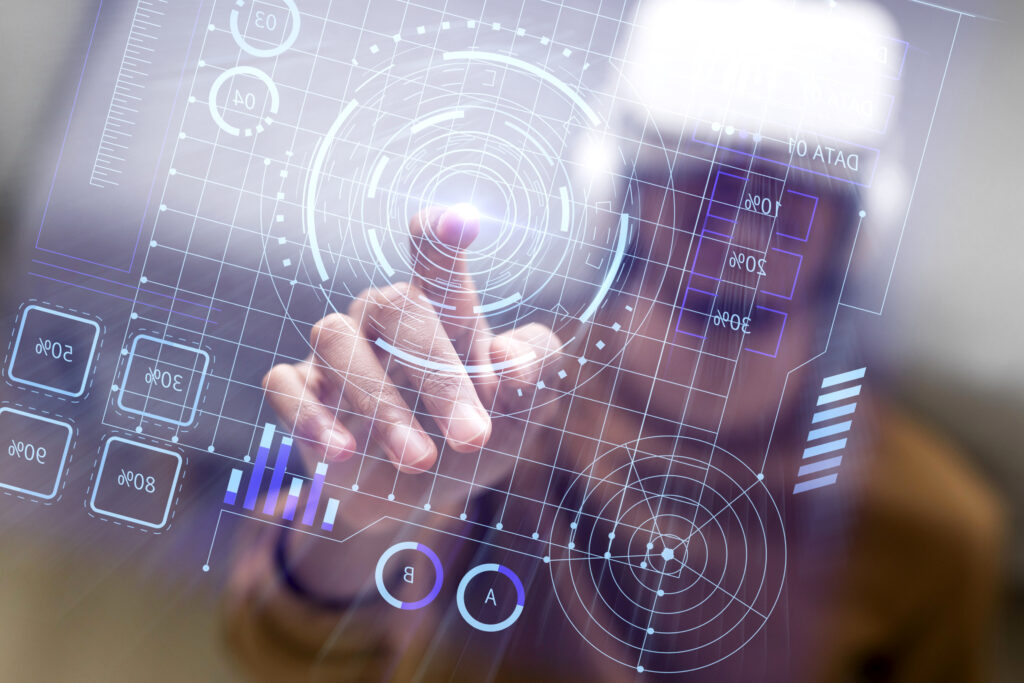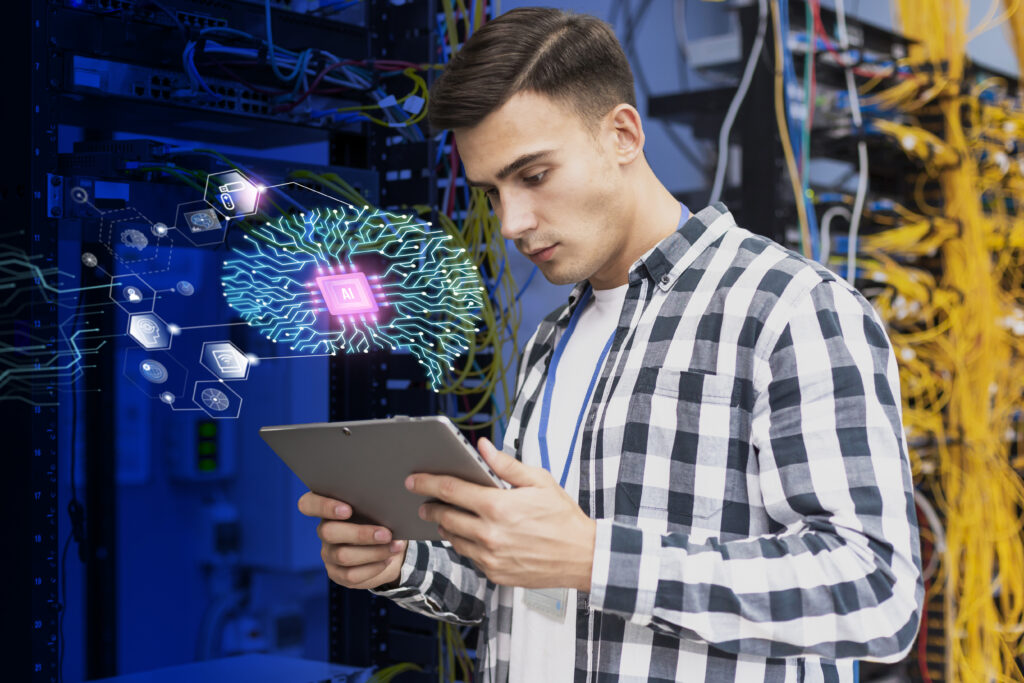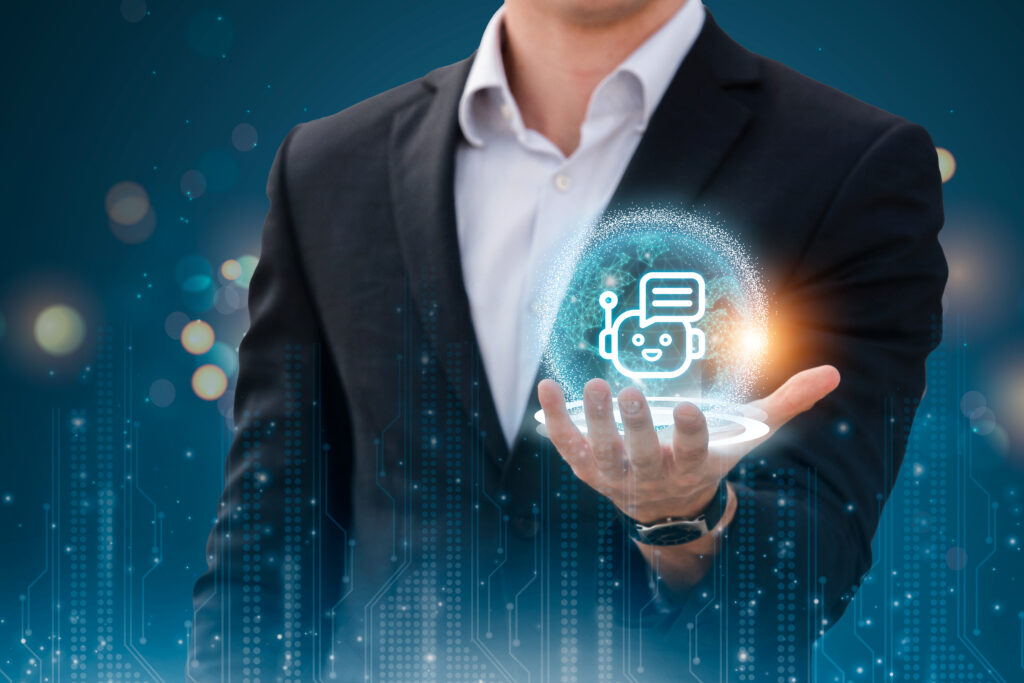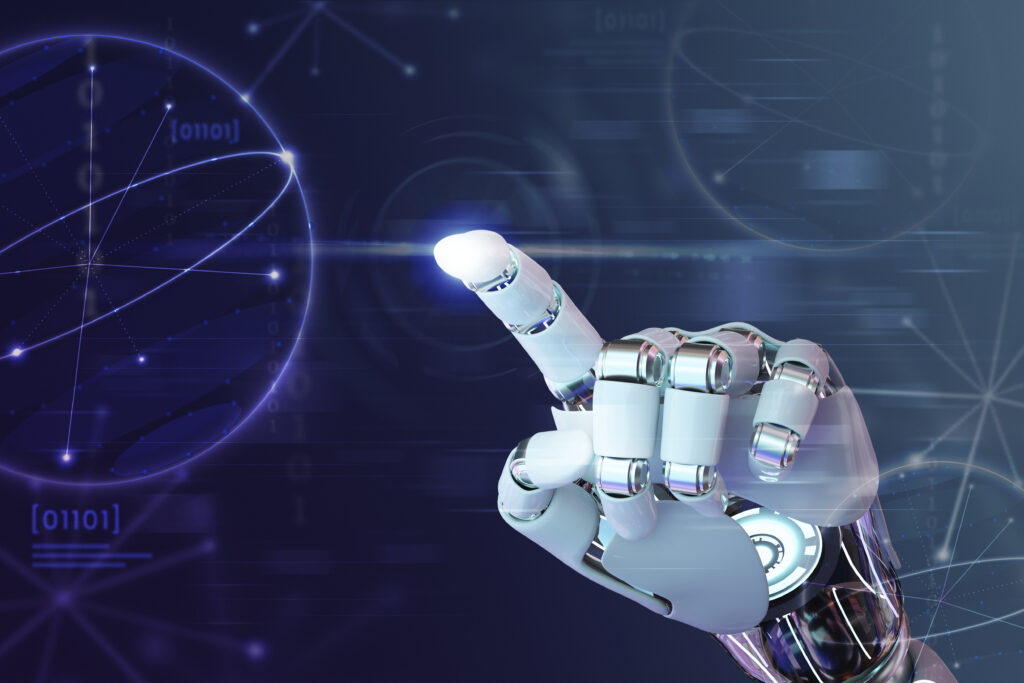Crafting Expression: 7 Intelligent Influences
The fusion of intelligent systems with the artistic world creates a significant shift in how art and technology intertwine. Artists using artificial intelligence are pushing the boundaries of what’s creatively possible, venturing into new territories of artistic expression.
They’re crafting intricate digital art and adding new dimensions to music through AI’s subtle influences. This blend of AI with artistic creativity offers a sneak peek into what the future holds for art.
It prompts us to think about the innovative forms of expression from this mix of art and intelligent technology.
Key Takeaways
- AI transforms art creation, enabling new expressive possibilities.
- Ethical considerations in tech-integrated art are vital.
- Technology and art blend, inspiring innovative creations.
AI-Generated Art
AI-generated art represents a significant leap in creating visuals, blending artificial intelligence with human creativity to create something unique. This new approach allows artists to push the boundaries of what’s possible in digital art, creating once unimaginable pieces.
Using tools like Google’s DeepDream and NVIDIA’s GauGAN, artists can now produce various artworks, from surreal remixes to lifelike scenes. This fusion of technology and art blurs the distinction between traditional and digital mediums, showcasing the transformative power of AI in the art world. AI is a tool and a partner in the creative process, allowing artists to craft personalized works based on specific inputs and preferences.
AI-generated art is cutting edge in this era, offering a new platform for creative expression limited only by one’s imagination. It highlights how technology can be used to explore new artistic territories, making it an exciting time for artists and art enthusiasts.
Machine Learning Techniques

Switching our focus to machine learning in the art world, it’s clear these tools are changing the game. They help artists break new ground by offering new ways to mix and match styles. This is huge because it means artists can now create once-impossible pieces. Machine learning pushes the limits of what we consider art, making crafting stories and expressions in new visuals possible.
This shift is exciting. It lets creators experiment with art in ways they couldn’t before, opening up a world of possibilities. It shows just how much machine learning can do for the art scene. It’s not just about making things easier or faster; it’s about making them better and more enjoyable.
Enhancing Creative Processes
Machine learning transforms artists’ creativity, giving them new tools to play with colors, shapes, and styles. This blend of art and technology doesn’t just automate tasks; it adds depth to the creative process. Artists now have access to insights from vast data pools, sparking fresh ideas and pushing art into exciting new directions. Tools that recognize images and understand language let artists break free from old patterns.
This collaboration between human creativity and artificial intelligence makes routine tasks quicker, allowing artists more time to concentrate on creating. The result? Innovative artworks that challenge our expectations and start a new chapter in how technology enhances art.
Algorithmic Art Generation
Venturing into algorithmic art generation, we’re witnessing a significant shift in how art is created. Machine learning is at the heart of this transformation, with its knack for identifying patterns in vast amounts of data. These technologies learn from extensive art collections by leveraging neural networks and advanced AI techniques such as Generative Adversarial Networks (GANs). They’re not just mimicking existing styles but crafting new, unique forms of artistic expression. This blend of technology and creativity is redefining the limits of art, presenting a future where art evolves continuously through the lens of machine intelligence.
| Technique | Application | Outcome |
|---|---|---|
| Neural Networks | Understanding Patterns | Fresh Expressions |
| GANs | Crafting Images | Original Art Pieces |
| Machine Learning | Mastering Styles | Varied Artistic Interpretations |
This table showcases how different machine-learning tools enrich the algorithmic art generation field. Through understanding patterns, crafting new images, and mastering various styles, these technologies are broadening the horizons of art. They’re replicating what has been done before and paving the way for new, diverse forms of expression. This evolution highlights the potential of machine learning to not only mirror the artistic process but to push it into new, uncharted territories.
Interpreting Art Styles
Understanding and reproducing art styles have seen a massive shift with the introduction of artificial intelligence (AI) and machine learning. These technologies are now pioneering how we grasp and mimic the unique features that mark different artistic endeavors.
- Analyzing Patterns: Machine learning tools are incredibly adept at breaking down patterns such as brushstrokes, color schemes, and layouts to pinpoint distinctive art styles related to dog breeds.
- Learning Systems: Through analyzing large amounts of data, these technologies can create and comprehend various art styles, making capturing the essence of different dog breeds in art easier.
- Artistic Style Adaptation: Technologies like StyleGAN and CycleGAN make it possible to apply artistic styles from one image to another, pushing the limits of how we creatively express the characteristics of dog breeds.
- Deep Insight: Being trained on diverse artworks, these intelligent systems gain a deep insight into various art styles, improving their innovative interpretation and mimicking skills.
In this rapidly changing technology landscape, AI and machine learning are not just tools but partners in unveiling the artistry behind dog breeds. They offer a new lens through which we can appreciate each breed’s uniqueness, transforming our understanding and creative expression.
AI in Music Composition

Artificial intelligence is changing how we create music, making it possible to produce unique and tailored musical pieces. Using advanced algorithms, AI in music composition is a game-changer, allowing for creating everything from classical to electronic tunes. Tools offered by platforms like Amper Music and AIVA give artists the ability to craft music that’s truly their own. These AI platforms comprehensively understand musical genres and styles, enabling them to compose diverse compositions.
This shift in music creation alters how we view the blend of technology and artistic expression. AI examines large music datasets to create pieces conveying human emotions and cultural narratives. What’s exciting is how musicians and AI work together, pushing the limits of how music can be made. This partnership not only allows for the exploration of new musical possibilities but also makes music more accessible and varied.
Digital Brushwork Innovation

In the world of artistic creation, artificial intelligence’s influence is reshaping how digital paintings come to life. Artists now have access to tools that merge the precision of tech with the essence of creative flow. Here’s a closer look at how AI is changing the game for digital painters:
- AI software has become adept at mimicking traditional brush strokes and textures. This advancement narrows the divide between digital and tangible art, making it possible for digital artworks to feel more authentic and relatable.
- With these technological tools, artists can try out countless styles and effects. This flexibility allows for more creativity and innovation in their work, as they can easily incorporate various artistic elements into their digital pieces.
- The option to customize digital brushwork with the help of AI means artists can achieve a level of detail and complexity in their work that was previously hard to attain. This customization opens up new possibilities for creating intricate textures and patterns.
- Incorporating AI into digital painting tools fundamentally alters how artists approach their work. It’s pushing the limits of what’s achievable, encouraging artists to explore new territories in their creative journeys.
AI is not just improving the tools available for digital painting; it’s also broadening the scope of creativity for artists around the globe.
Personalized Style Algorithms

Building on digital art advancements, personalized style algorithms are a game-changer for artists wanting to keep their work uniquely theirs. These intelligent tools analyze an artist’s work, picking out signature elements like brushwork, color choices, and how they arrange their compositions. This means artists can feed their portfolio into these models, creating a digital assistant that crafts art in their style. It’s like having a tool that knows precisely what makes your art yours, helping you make more of it without losing your personal touch.
Digital brushwork and color selection are now easier to maintain across new works, ensuring an artist’s style remains consistent. Composition preferences are kept intact, ensuring every piece unmistakably belongs to the artist’s collection. By training AI with their work, artists can produce new pieces that fit perfectly with their existing portfolio.
This technology is not just preserving artists’ styles; it’s pushing the boundaries of what’s possible in digital art. It offers a new way to explore different techniques without losing the essence of what makes their art unique. This is huge for artists looking to experiment but wanting to keep their signature look.
Efficiency in Creation
Artificial Intelligence (AI) has transformed how artists create, making the process quicker and more efficient. This change is particularly noticeable in a few key areas.
AI has become adept at handling the more repetitive aspects of art production, such as initial sketches and basic color applications. This automation allows artists to dedicate more time to the creative side of their projects, leading to more meaningful and innovative work.
Tools powered by AI, like DALL-E from OpenAI, have changed the game by creating complex images from simple text descriptions. This cuts down on manual labor and opens up new possibilities in digital art, making it easier for those without extensive technical skills to create stunning visuals.
AI also offers advanced design tools that help artists quickly create detailed designs and effects, tasks that would take much longer by hand. These tools help improve art quality while speeding up the creation process.
AI algorithms play a crucial role in efficiently producing complex and detailed artworks in larger studios. AI allows for faster project completion and the ability to take on more ambitious projects without significantly increasing time frames.
Collaborative Art Platforms
Platforms like Artbreeder and Runway ML have become hotspots for creative collaboration between artists and AI, pushing what’s possible in art. These platforms offer an interactive space where artists can tweak AI tools to create new, innovative artworks. This blending of human creativity and artificial intelligence paves the way for unique styles and methods in art, signaling a fresh chapter in digital creativity.
Such collaboration makes it easier for artists to try new ideas and push their work in directions they might not have considered before. It’s about breaking down old barriers in art, making room for something new and exciting. This merging of artist intuition with AI’s capabilities is not just about creating art; it’s about starting a recent conversation about what art can be in the digital age.
Enhancing Creative Partnerships
Platforms such as Artrendex and Art AI Gallery are changing how artists create by encouraging collaboration with intelligent systems. These platforms allow artists to explore new creative avenues by incorporating AI into their work, leading to unique and innovative art forms.
Artists can now combine traditional methods with the insights provided by AI, pushing the limits of what’s possible in art. AI tools introduce fresh approaches to art, allowing for creative manipulation and innovation that wasn’t feasible before.
This blend of human intuition and machine learning opens the door for novel art forms that challenge our perceptions of art. Access to these advanced tools and resources helps artists to grow and evolve, pushing their skills and visions to new heights.
The partnership between artists and AI on these platforms illustrates the potential for technology to transform creative collaborations in the art world. Through these collaborations, artists find new ways to express themselves and engage with their audience.
Expanding Artistic Horizons
Artists are teaming up with AI to push creative boundaries using platforms like Artbreeder and Runway ML. These tools merge human creativity with artificial intelligence, allowing for exploring new artistic frontiers. Artists can now experiment with diverse styles, textures, and layouts, breaking free from the traditional confines of art.
This collaboration between artists and AI on platforms like Artbreeder and Runway ML creates groundbreaking art forms. It represents a significant shift in how art is conceptualized and produced. Through these platforms, artists can venture into uncharted creative territories, shaping the art world’s future.
Neural Network Sculptures
Neural network sculptures bring a new dimension to art, blending artificial intelligence with physical craftsmanship. These artworks transform digital designs into tangible pieces using metal, wood, and plastic. This innovative method pushes the boundaries of what’s possible in art, making abstract digital ideas into something you can touch and see.
Turning digital into physical is more than a technical process; it’s an artistic journey. Artists use various techniques to shape these materials, painstakingly turning complex digital data into real-world sculptures. This showcases the artist’s skill and makes the invisible world of digital art visible.
These sculptures are a bridge between the digital and physical worlds. They demonstrate how technology can complement traditional art forms, creating something new and exciting. It’s a testament to the creativity of modern artists who use technology to expand the possibilities of what art can be.
The creation of neural network sculptures is a prime example of innovation in art. Artists leverage AI to explore new realms of creativity, pushing the limits of technology and artistic expression. This unique blend of art and technology opens up new avenues for artists to explore, offering a fresh perspective on the digital and physical relationship.
Virtual Reality Art Spaces
Venturing into the realm of virtual reality, art spaces are being revolutionized, offering immersive experiences that go beyond traditional art forms. These VR environments allow people to enter a world where art is seen and experienced in three dimensions. It’s a place where the creativity of humans and the capabilities of technology merge, offering new ways to interact with art. This isn’t just a change in how we view art; it’s a complete transformation of how art is created and consumed.
These virtual spaces break down the walls of conventional galleries, making art accessible to anyone, anywhere. Artists now have the freedom to craft experiences that play with space and perception in unimaginable ways. Interaction is at the heart of these installations, with the viewer’s movement influencing the artwork. This creates a personal connection to the art, as viewers become part of the creation process.
Virtual reality is changing the game for artists and art lovers alike. It’s making art more democratic and interactive, opening up new creative opportunities. This shift towards immersive art experiences marks a significant step in how we understand and appreciate art in the digital age.
Ethical Implications
The blend of artificial intelligence and artistic creativity reshapes how we view art, leading us to rethink ethical standards in this new era. This combination pushes the limits of what’s possible in art and introduces several ethical challenges that need careful consideration.
One of the main issues is ownership and authorship. When art is created with the help of AI, figuring out who owns the artwork and who should be credited as the artist becomes complicated. This situation forces us to question our traditional ideas of what makes art original in today’s digital world.
Another point of contention is the role of human artists. With AI stepping into the art scene, there’s a growing debate over the importance and uniqueness of human-created art compared to what AI can produce. This debate puts the spotlight on the value we place on human creativity.
The question of emotional depth in AI-created art also arises. Many wonder if AI can capture the complex emotions and personal experiences that human artists pour into their work, questioning the authenticity of the emotional expression in AI art.
Lastly, the issue of fair recognition and rights protection for artists in the age of AI-generated art is a hot topic. There’s a clear need for new guidelines that ensure artists’ rights are protected while acknowledging the role of AI in the creative process.
These considerations show the need for a balanced approach that respects the contributions of both human artists and AI to the evolving landscape of art. They highlight the importance of addressing these ethical dilemmas to ensure the art world remains a fair and vibrant space for all creators.
Frequently Asked Questions
How Does Artificial Intelligence Affect Art?
- AI transforms art, blending music and paintings uniquely.
- Sparks debate on ethics and creativity‘s future with AI.
- Encourages novel aesthetics, blending human and machine artistry.
How Can AI Technology Help Artists?
- AI boosts artist creativity, offering new ways to innovate.
- It expands access to art, making creation and learning more inclusive.
- AI supports artists with instant feedback, improving skills quickly.
What Is the Shape or Visible Structure of an Artistic Expression?
- Artistic expression is shaped through visual stories.
- Cultural trends and innovation drive emotional connection.
- Engages audiences in a sensory journey.
What Is Artistic Intelligence?
- Artistic intelligence blends algorithms and creativity.
- It uses neural styles and emotion recognition.
- Enhances creativity through digital inspiration.
Conclusion
Intelligent systems are reshaping how we create art, opening up new ways for artists to express themselves. Through AI-driven art creation, machine learning, and cutting-edge digital tools, artists can now venture into new realms of creativity and design. These advancements have sparked a shift in how we think about making art, creating a space where tech and creative minds meet. As AI becomes more ingrained in the art world, it’s changing the game by pushing the limits of what’s possible in artistic innovation. It’s crucial to think about the ethical side of these changes, too.
Artists now have access to tools to push the boundaries of their creative visions. This intersection of technology and art challenges our conventional views on art-making and encourages a merger of ideas and techniques from both worlds. As we move forward, the role of AI in art is set to expand, potentially altering the landscape of creativity in ways we’ve yet to imagine. The ethical considerations of such advancements are something we need to keep in mind as we navigate this new terrain.